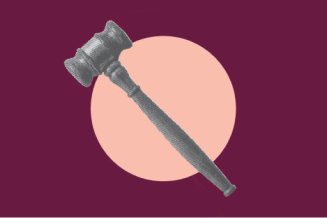Court Orders Release of Detainee Abuse Photos
Yesterday, the 2nd Circuit Court of Appeals ordered the government to release 21 photographs depicting the abuse of detainees by U.S. soldiers in Iraq and Afghanistan. The decision comes as part of the ACLU's long-running battle to expose government misconduct at detention facilities, and is a clear victory for the public's right to know. It also joins a continually growing catalogue of judicial criticism of the Bush administration's handling of the so-called "war on terror." And there is no doubt that the 2nd Circuit's recent decision will not be the last judicial opinion on the matter. What is unique about the case, however, is that it puts in historical context this administration's ever-strained relationship with the Geneva Conventions.
When the ACLU and others first requested access (PDF) from the government to the now-infamous photos of abuse at Abu Ghraib and elsewhere, the government responded that disclosure would be an "unwarranted invasion of privacy" of the detainees in the pictures. According to the government, the detainees' privacy justified keeping the photos from the public, even if—as the ACLU requested—all identifying features in the photos were obscured. Not surprisingly, both the trial and appellate courts rejected the argument. After all, if you cannot recognize the detainees in the pictures because their faces and distinguishing features have been replaced by black boxes, how can their privacy be at stake?
What is surprising, however, is the government's partial reliance on the Geneva Conventions to make this argument. The Third and Fourth Geneva Conventions protect prisoners of war and detained civilians from "insults and public curiosity." (An extreme example of subjecting a prisoner to "public curiosity" might be parading that prisoner in shackles down a street lined with jeering civilians.) The government argued, in the court's words, that "a photograph of abuse is so humiliating that its dissemination always opens the detainee to 'public curiosity.'"
The argument is surprising, of course, because the same administration maintained for years that the Geneva Conventions do not apply to any of the detainees in Afghanistan and Guantánamo Bay. It is surprising because the same administration relied upon its determination that the Geneva Conventions do not apply to justify its use of barbaric and inhumane interrogation methods in the first place. It is surprising because there would be no photos of abuse to request had the government cared this much about the Geneva Conventions before the abuses occurred and the photos were taken.
What is not surprising is the 2nd Circuit's rejection of the government's attempt to seek refuge in the Geneva Conventions. The Geneva Conventions were designed to prevent the abuse of prisoners, not to derail efforts to hold the government accountable for those abuses. In fact, as the court recognized, the government's argument based upon the Geneva Conventions—that releasing photos of abuse violates the Geneva Conventions even when identifying features are redacted—is quite novel. Previous administrations have taken the opposite view. Most notably, after World War II, it was the U.S. government that widely released photos of prisoners in Japanese and German prison and concentration camps. Those pictures showed emaciated prisoners, subjugated detainees, and even corpses. But the United States championed the use of the photos as a means of holding the perpetrators accountable.
It is therefore quite ironic that this administration has attempted to suppress efforts to use evidence of its misconduct to hold it accountable. And even more so that it cites the Geneva Conventions in support. Fortunately, the Geneva Conventions and their rationale were vindicated by the 2nd Circuit: "Release of the photographs is likely to further the purposes of the Geneva Conventions by deterring future abuse of prisoners."
We can only hope.
Stay informed
Sign up to be the first to hear about how to take action.
By completing this form, I agree to receive occasional emails per the terms of the ACLU's privacy statement.
By completing this form, I agree to receive occasional emails per the terms of the ACLU's privacy statement.

